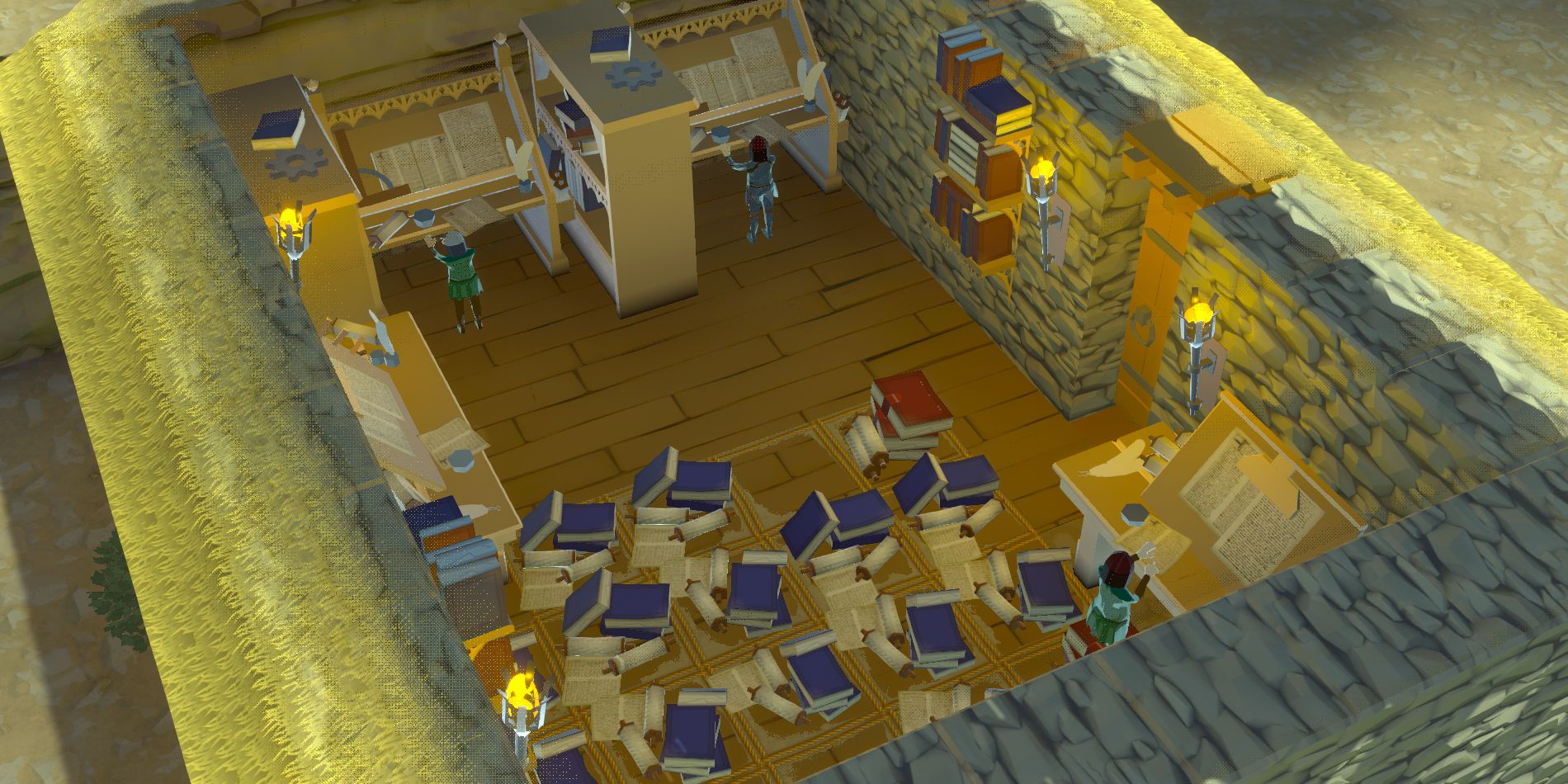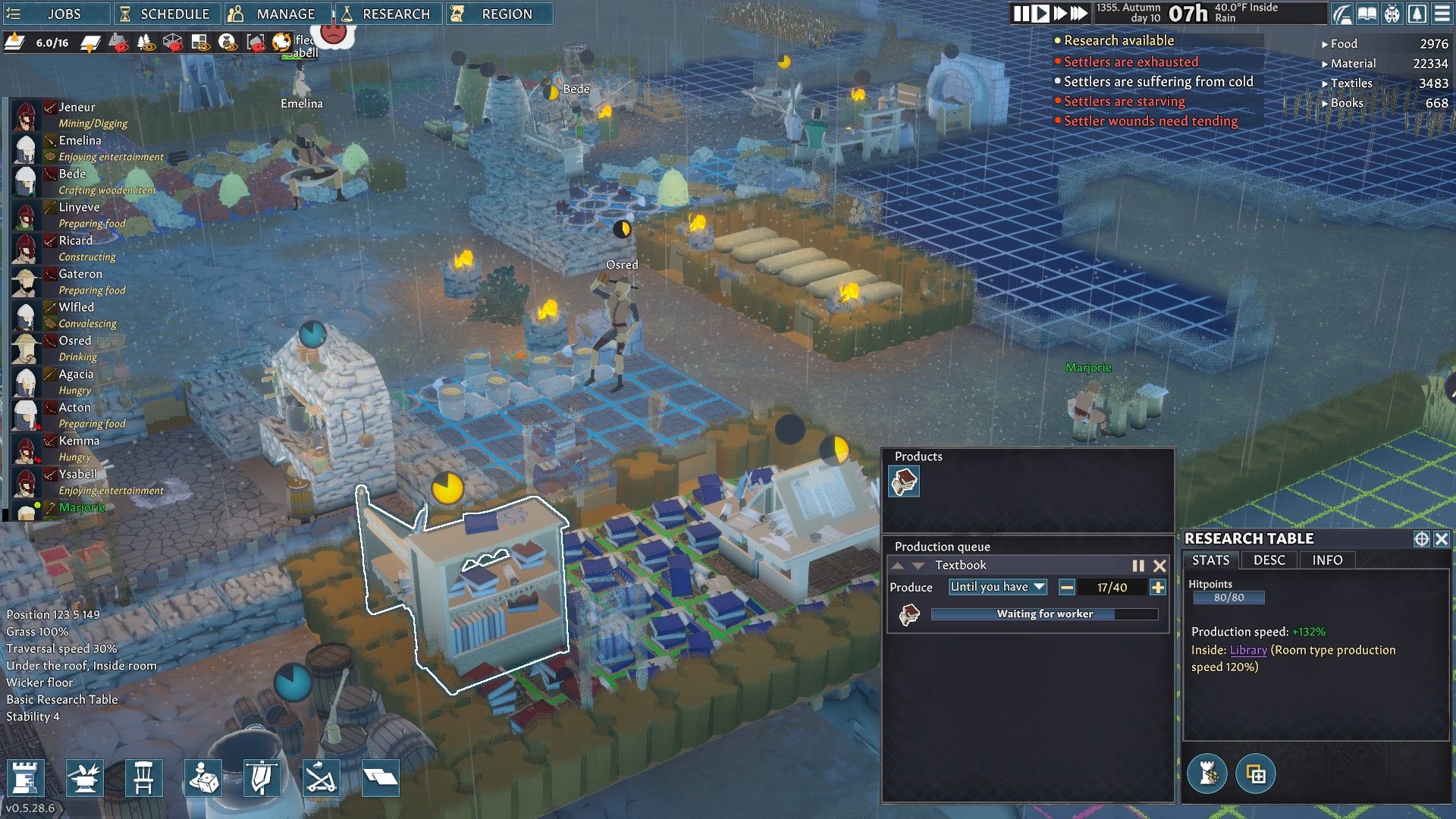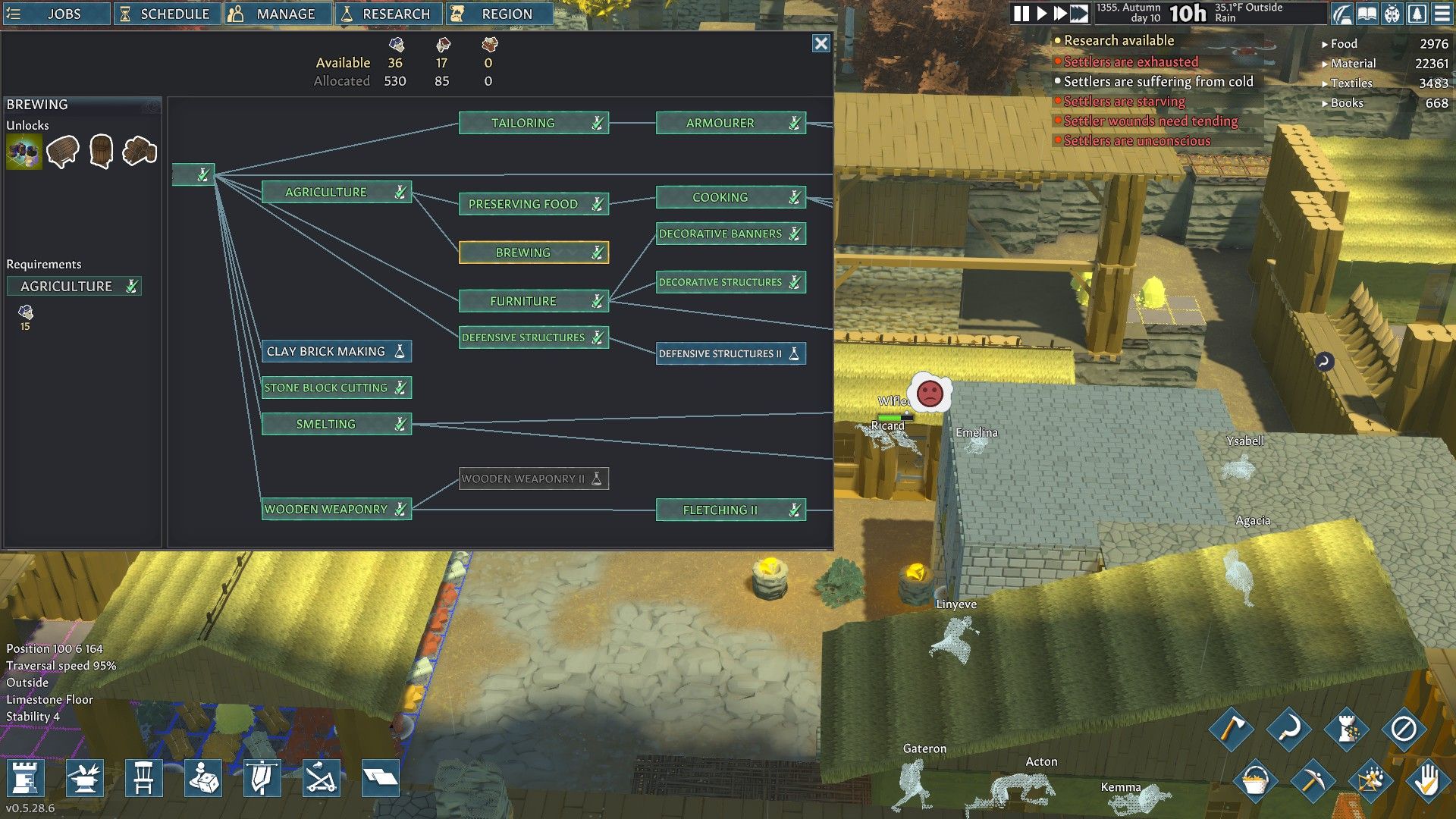Going Medieval is already gaining heavy traction while still being in early access. The game is very open-ended, giving players the freedom to build and plan whatever comes to mind. This can be daunting, as there are lots of overwhelming options.
New settlements will only have a few basic items like hay piles to sleep on, campfires, and some starting equipment. But, via research tables, settlers can begin studying new technology and living methods. With time, a simple hovel will become a thriving castle filled with grand dining halls, impressive cathedrals, and powerfully armed warriors.
Building a Library in Going Medieval
While a basic research table is needed to start researching, placing it outside will cause a production speed penalty. At a minimum, it should be placed indoors with roofing and closed doors. While this will give a 100% production rate, it can be further improved by turning the room into a dedicated library. This includes adding at least two bookshelves and omitting any beds, shrines, or non-research workstations from the same room. This will grant a +32% speed bonus.
To prepare ahead, the size of the room should be big enough for additional research desks of the three sizes - basic, normal, and advanced. The floor should be completely installed and a stockpile dedicated for textbooks made within the library. Books that are left on the dirt floor and/or out in bad weather will rot after a few weeks. Despite the appearance of bookshelves, chronicles and other text cannot currently be stored in them. Until a further update, they will need to be left on the ground. If the library itself becomes packed with books, the excess can be placed into a different secure and dry storage. If the allocated portion of books were ever destroyed, players will need to produce more to equal the old total before newly available ones can be used.
Since the library is a place several characters will spend their daily time in, it should be given good temperature control from clay walls, open windows during hot summers, and lit braziers in the winter. While non-research structures cannot be in the library properly, it is a good idea to keep beds, food, and entertainment close by. This will prevent workers from wandering all over the settlement to meet their needs.
Intellectuals and Research Priority in Going Medieval
While anyone can operate a basic research table, normal and advanced tables need a settler with 10 or more ranks in intellectual. The research task should be their first or second priority. For creating the actual tables, constructors will want a plentiful amount of woodcut by botanists. Finally, the advanced research table needs an expert smith with at least 20 skill ranks to make mechanical components. Without these skills, researching can hit some long roadblocks.
The priority of research will depend on game settings and map type. Weapons and armor will not be needed for peaceful games, while they will extremely important during survival. Likewise, a mountain map favors research for metal and stone use, while a valley will make soil and tree-related research a main topic.
Architecture
- Architecture is a required first investment of 15 chronicles. This is needed to unlock any other form of research, but on the plus side will grant wooden beams that can offer great stability without the use of walls.
Agriculture
- This is one of the most important research topics and only costs a mere 15 chronicles. Agriculture will let botanists grow vegetables and plants on dirt tiles. However, they cannot place seeds on rock or other harder grounds, making each piece of dirt precious on mountain maps. Cabbage, carrots, and beets are excellent for cooking meas. Redcurrants and barley can be eaten as well, but are better used for alcohol. Flax is needed to make textiles for both clothes and some armor. Herbs are used both in beer and medicine making.
Brewing
- Settlers in Going Medieval do not drink water, instead, they need booze to quench their thirst. Without this made resource their mood will crash (unless they are zealous Restitutionists who don’t drink at all). Once a brewing station is made, settlers will first need to man the production of rough wine or ale, before leaving it alone to ferment. Because of the slow supply and high demand, making multiple brewing stations quickly is key.
Furniture
- This research will allow the creation of hay beds, which are much more comfortable than the starting hay sleeping spot. Workers will be much more productive the next day after a great night’s rest.
Decorative Structures
- Decorative structures research unlocks wall hangings necessary for registering room bonuses. This will first mean book shelves for the library, but will later result in pots in kitchens, tools in workshops, and banners in churches.
Wooden Weaponry
- Wooden weapons include clubs, spears, and shortbows. The latter is excellent for hunting wild animals safely, and also defending the settlement from marauding bandits.
Fletching II
- Fletching improvements will allow carpenters to create the mighty longbow. While this is a direct upgrade to the shortbow, the wielder will need at least 10 ranks in marksman before they can use it.
Tailoring
- Sewing stations are needed to make proper clothes during burning summers and freezing winters. Without them, settlers may pass out from the extreme weather. Additionally, settlers will become bored with the same clothing and new more fashionable clothes will be needed to improve mood.
Smelting
- The smelter can convert raw iron nuggets into iron ingots. These are used for all types of high grade weapons and future structures. This includes stoves, doors, and traps.
Preserving Food
- The smokehouse can extend extra meat’s lifespan from days to months or even years. However, the nutrition drops to a mere 30 per serving. This is less needed if a large cold storage has already been built underground.
Armorer
- Armor stations allow tailors to make leather helmets and cloth armors like gambesons. This will reduce the damage for raid attacks or when hunting dangerous animals. They can even recycle broken armor or inferior loot dropped from enemy corpses.
Going Medieval is in early access on PC.



